Yesterday’s live coverage of the Ukraine conflict can be found here. An archive of our liveblogs can be found here. For an overview and analysis of this developing story see our latest podcast.
Please help The Interpreter to continue providing this valuable information service by making a donation towards our costs.
For links to individual updates click on the timestamps.
For the latest summary of evidence surrounding the shooting down of flight MH17 see our separate article: Evidence Review: Who Shot Down MH17?
This week Canada placed additional sanctions on the Russian energy firms Gazprom Neft OAO, Surgutneftegaz OAO and Transnefteprodukt OAO [TRPRO.UL] for their roles in supporting the Russian government which is, in turn, interfering in eastern Ukraine. The Russian embassy in Canada fired back, calling the sanctions “a sad déjà-vu of purely domestic nature.” A statement on the embassy’s website continues:
Motivated by vote-fishing, this counterproductive step, while encouraging the “party of war” in Kiev, destroys the fabric of Russian-Canadian relations. As a result, Ottawa continues to alienate itself from bilateral cooperation in vital areas, such as the Arctic and combating international terrorism. Not to mention undermining mutually beneficial business ties.
It’s high time for Canada to reverse this confrontational course that leads nowhere and bring back common sense, pragmatism and diplomacy.
But this may not be the only step Canada is willing to take. The Canadian government has taken its first steps toward sending lethal aid to Ukraine. Bloomberg reports:
A consultation notice posted to a government website asks for feedback on adding Ukraine to Canada’s Automatic Firearms Country Control List, which is the first stage in approving the export to the country of Canadian-made automatic guns, devices, components and other weapons including any vehicle with a restricted weapon mounted to it. Even if Ukraine is added to the list, each sale would still require government approval.
“Canada continues to stand with the people of Ukraine in the face of Vladimir Putin’s military aggression,” Johanna Quinney, a spokeswoman for Foreign Affairs Minister Rob Nicholson, said in an e-mail. “Canada will never recognize this Russian annexation of sovereign Ukrainian territory. We stand with Ukraine.”
The government notice was posted on June 11, the same day Harper returned from a one-week European tour during which he visited Kiev. While there, Harper participated in events with President Petro Poroshenko and Prime Minister Arseniy Yatsenyuk.
This does not mean that Canada will necessarily supply weapons to Ukraine, but it’s yet another move which Canada appears more eager to take than many of its allies in NATO.
— James Miller
The Interpreter’s Pierre Vaux reported today in the Daily Beast about
a video of drone footage taken by Ukrainian soldiers in Dnipro-1
showing the terrain behind enemy lines beyond the line of contact.
The drone video found a Russian camp with a sophisticated engineering presence of troops and vehicles:
Dnipro-1,
one of Ukraine’s many pro-government volunteer regiments, today
released a video compiling drone footage of a Russian military camp just
south of the village of Sontsevo in the Donetsk region.
Two drone flights were made over the same area, two weeks apart. Over
that time, the camp grew from a small collection of tents and
engineering vehicles into a fully-fledged forward operating base (FOB),
complete with tanks, communications equipment, personnel quarters and
even new roads.
Dnipro-1 provides the coordinates of the area seen by the drone,
south of Sontsevo, and places the Russian base at 47.518407,38.017988
which is here on Google Maps.
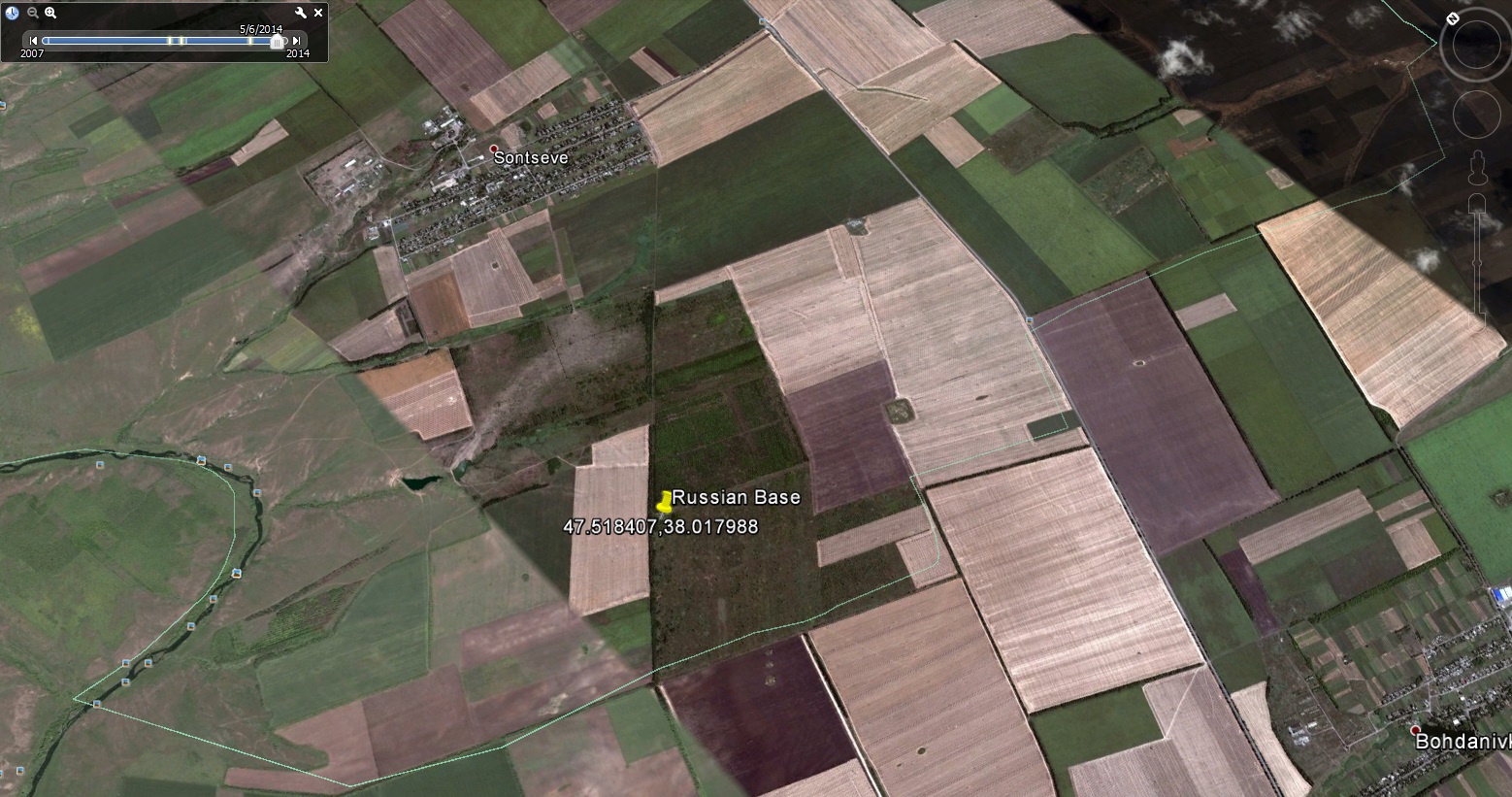
Here is a close-up of the area of the base (the last satellite image was taken in 2011):
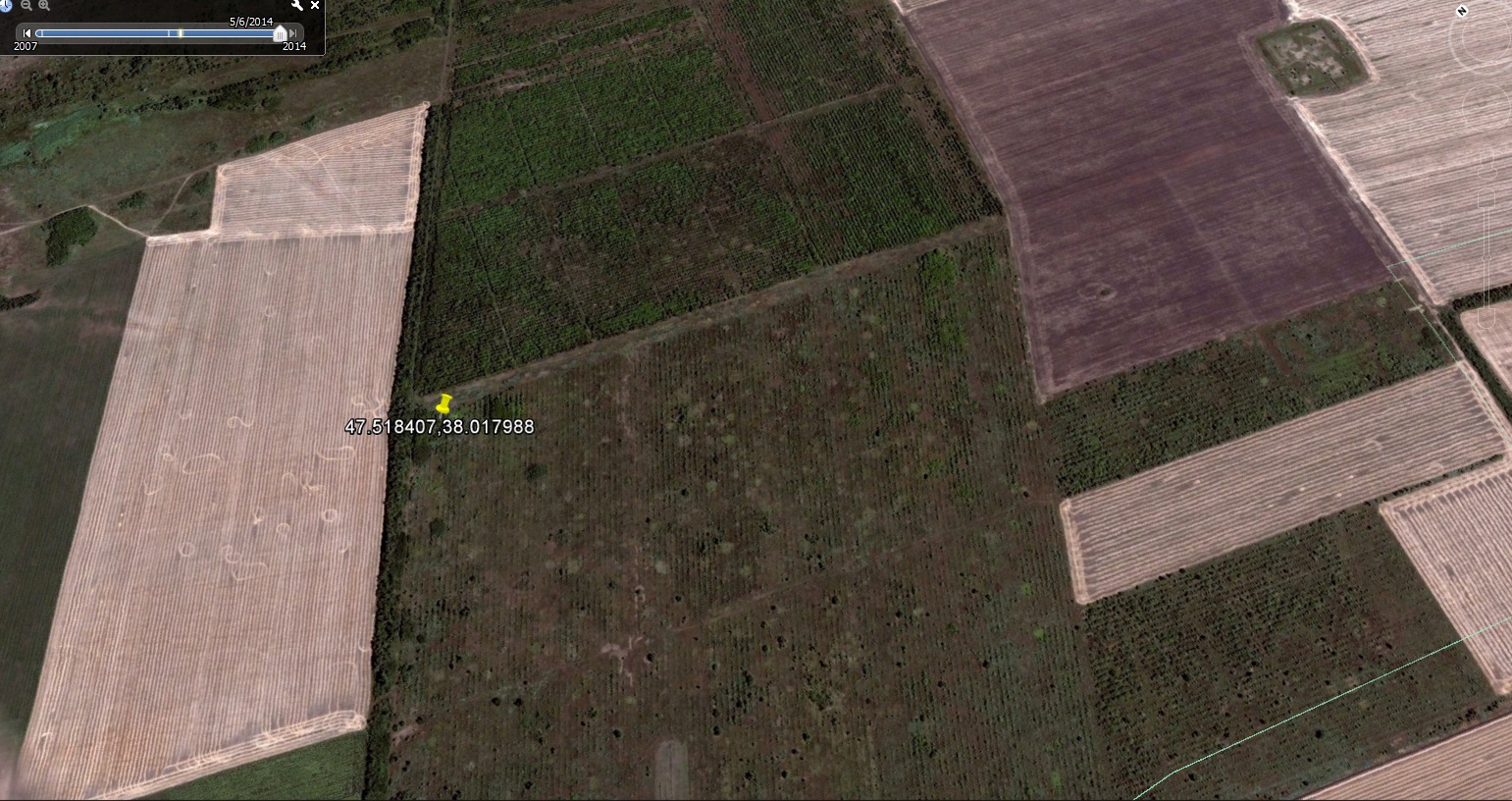
These match scenes from the video:
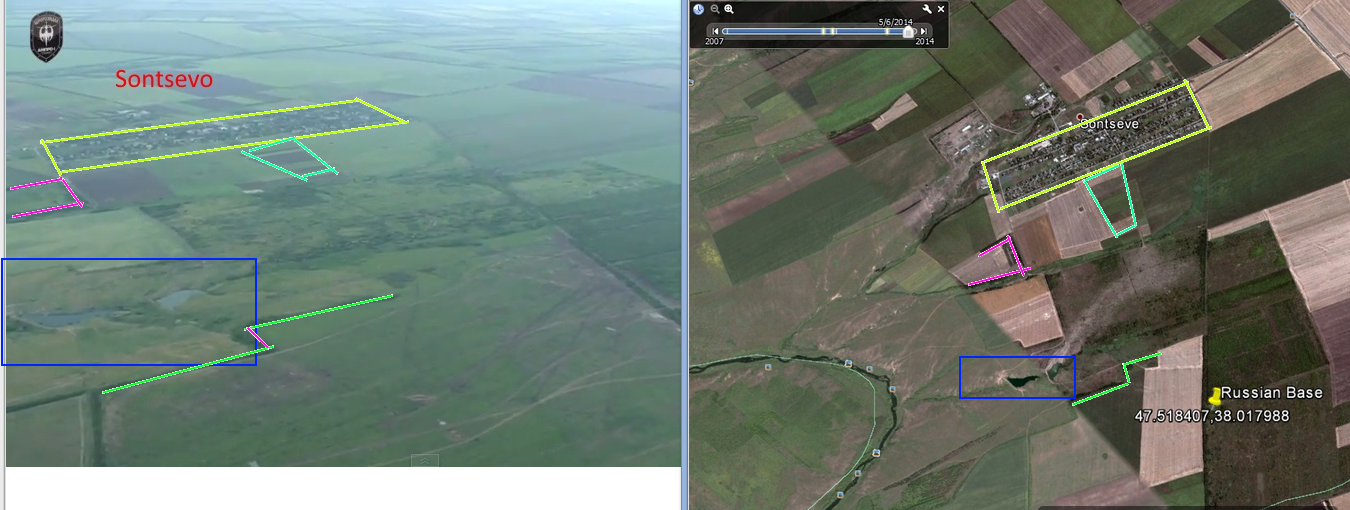
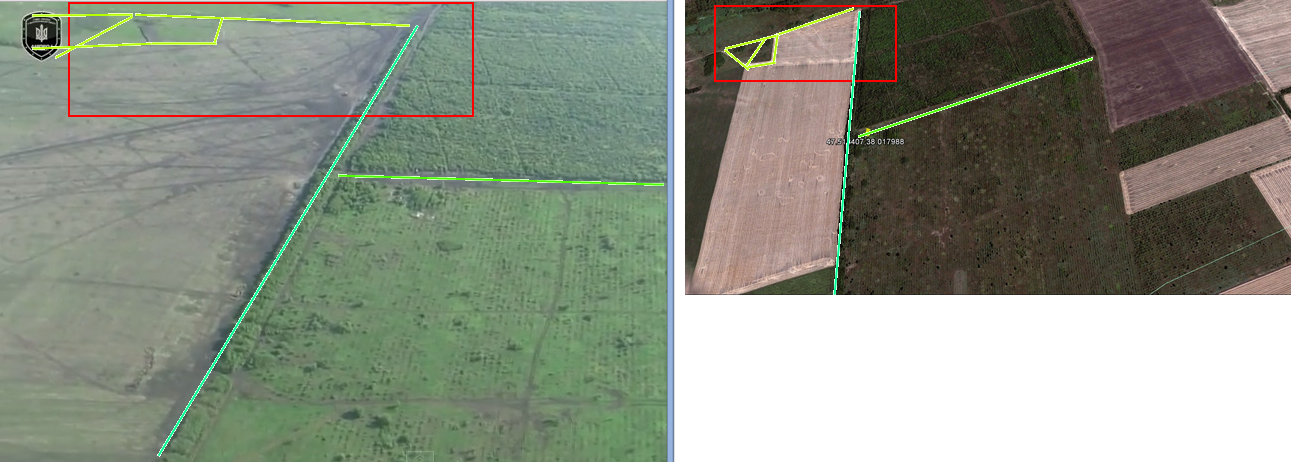
The video is significant but it is only part of a larger puzzle
which we have been putting together for weeks. The base depicted here is
in an area of several towns where our team at The Interpreter has used Russian and Ukrainian social media to prove the presence
of a training camp at an occupational school at Razdolnoye, equipped with tanks, infantry fighting
vehicles, and Grad rocket launchers.
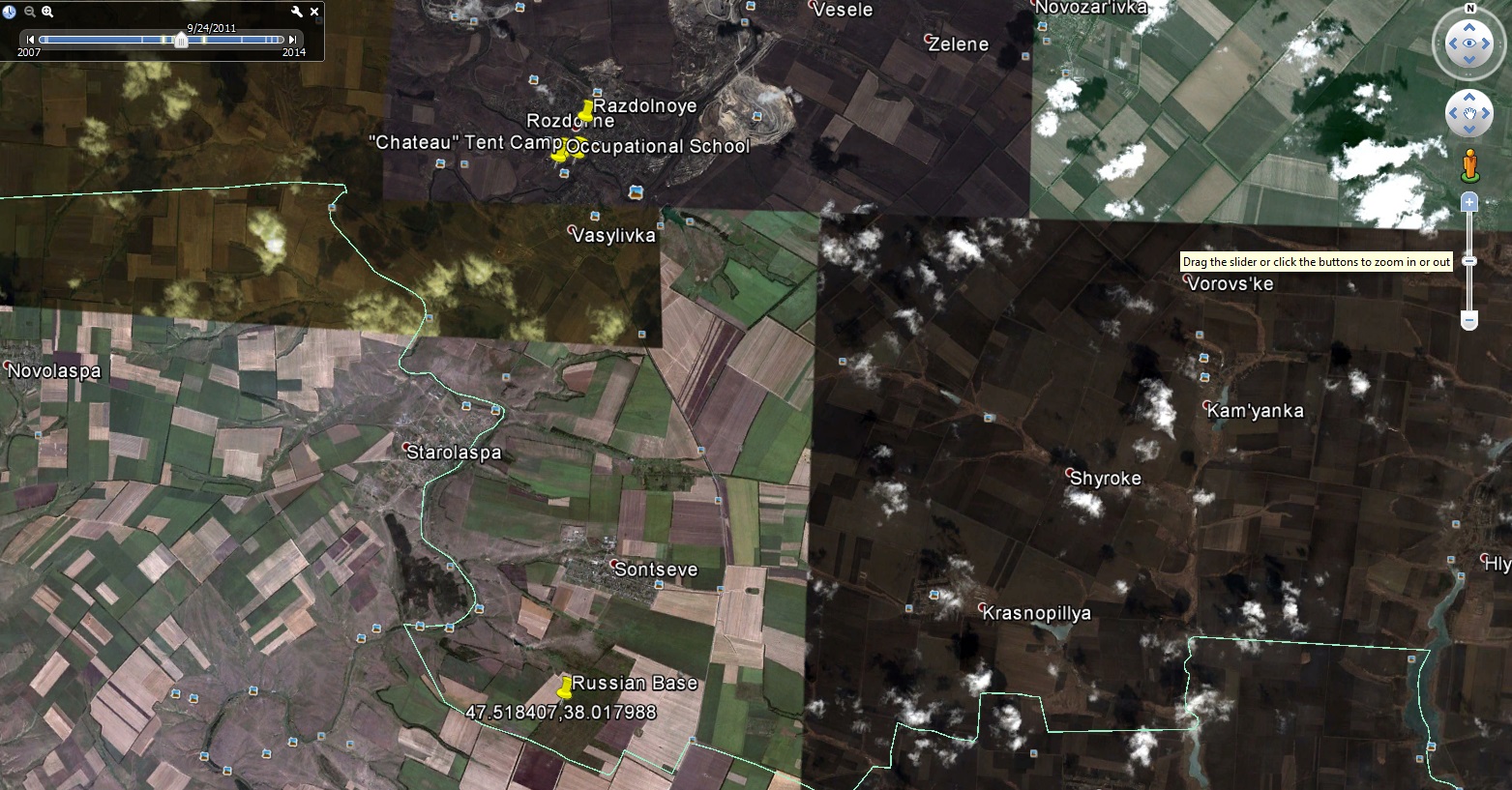
This is an area where the OSCE’s Special Monitoring Mission has also seen main battle tanks in Komsomolskoye and other armor massing anew — not pulling back to the distance beyond the line of contact as prescribed by the Minsk agreements.
In the video, T-72 main battle tanks are visible. The Ukrainian military has not been documented as having used this weapon in this conflict, and in their report on this conflict, Armament Research Services (ARES) called the presence of the T-72 on Ukraine’s battlefields a “red flag” which suggests direct involvement of the Russian military.
But to concentrate on this point alone is a mistake. The point is that the location of this camp is deep behind the lines in Russian-backed separatist controlled territory but close to a growing presence of suspected Russian armor and renewed fighting. The pro-Russian Military Maps daily depiction of the battles and front line make that abundantly clear, with the “Novorossiya” flags shown all around the towns near Sontsevo. Here is a screenshot from today’s map, showing the area covered by the drones in a red circle:
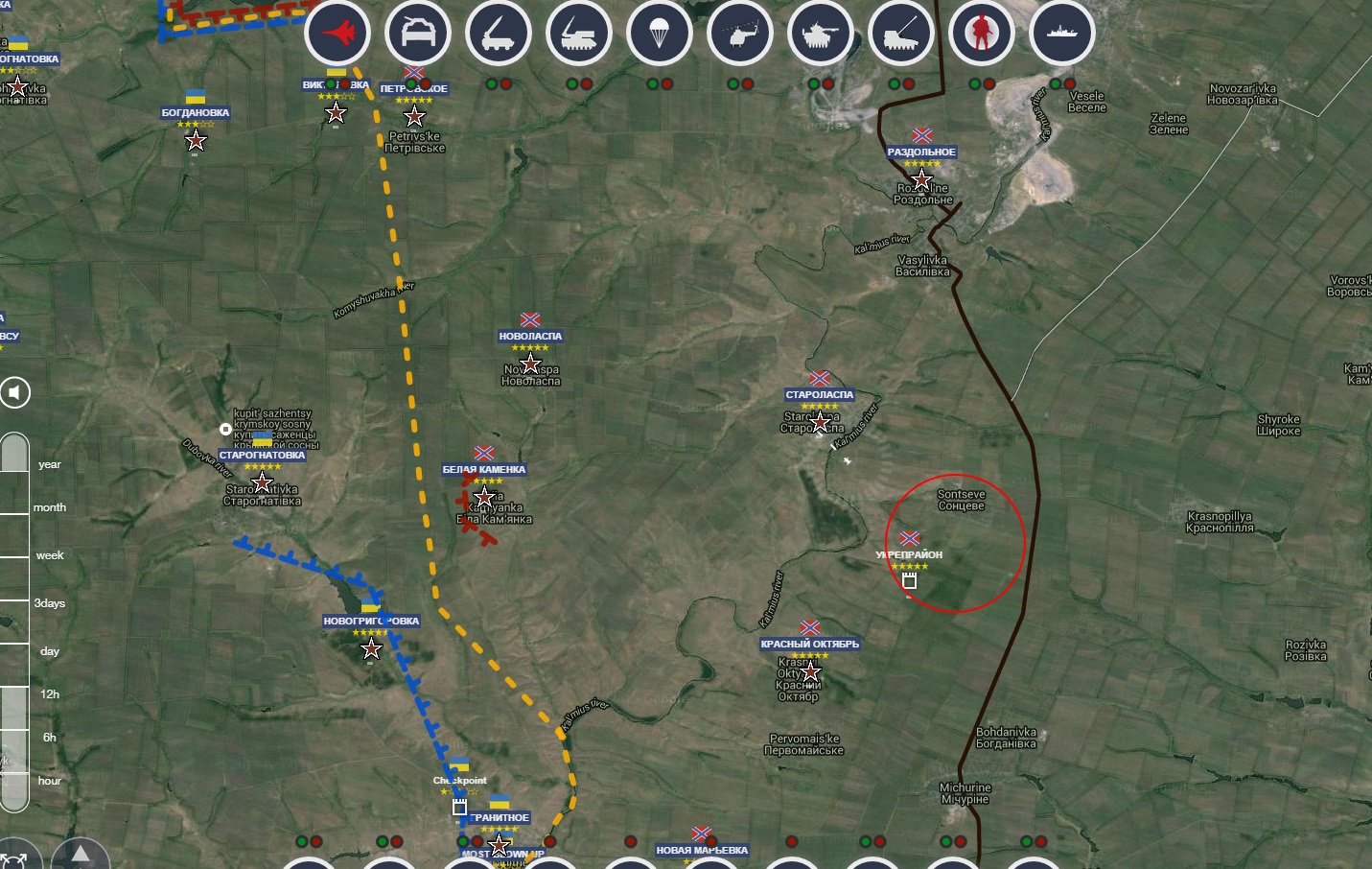
There is no way this could be a Ukrainian base, given its location. Could a bunch of “separatists” or “volunteers” build such a sophisticated base in just two weeks? Or is this more evidence that, once again, the Russian military is engaged on the front lines of this conflict?
— Catherine A. Fitzpatrick, James Miller
The escalation of violence in the Donbass continued last night, with Ukraine reporting intense shelling from heavy artillery and rocket launchers across the front line.
The Ukrainian military’s ATO Press Centre claims that 38 attacks were conducted between 18:00 and midnight, bringing the total recorded since midnight the day before to 83.
In the Donetsk area, Russian-backed forces reportedly shelled Marinka, Krasnogorvka, the Butovka mine and Peski.
In the south of the Donetsk region, the Press Centre reported that Novotroitskoye, north of Volnovakha on the Donetsk-Mariupol highway, and Granitnoye, east of Volnovakha, had been shelled with mortars.
Mariupol news site 0629.com.ua reports that Yaroslav Cherpurnoy, press officer for the Ukrainian military operation in that area, has told them that 12 attacks were conducted there yesterday.
Chepurnoy said that (translated by The Interpreter):
“The zone of attacks has broadened. Armed groups of the ‘DNR’ fired five times on Starognatovka, three times on positions in Shirokino, twice near Novotroitskoye and twice on Granitnoye.”
The press officer claimed that Russian-backed forces had used 122 mm self-propelled artillery, 120 and 82 mm mortars, tanks and small arms in their attacks.
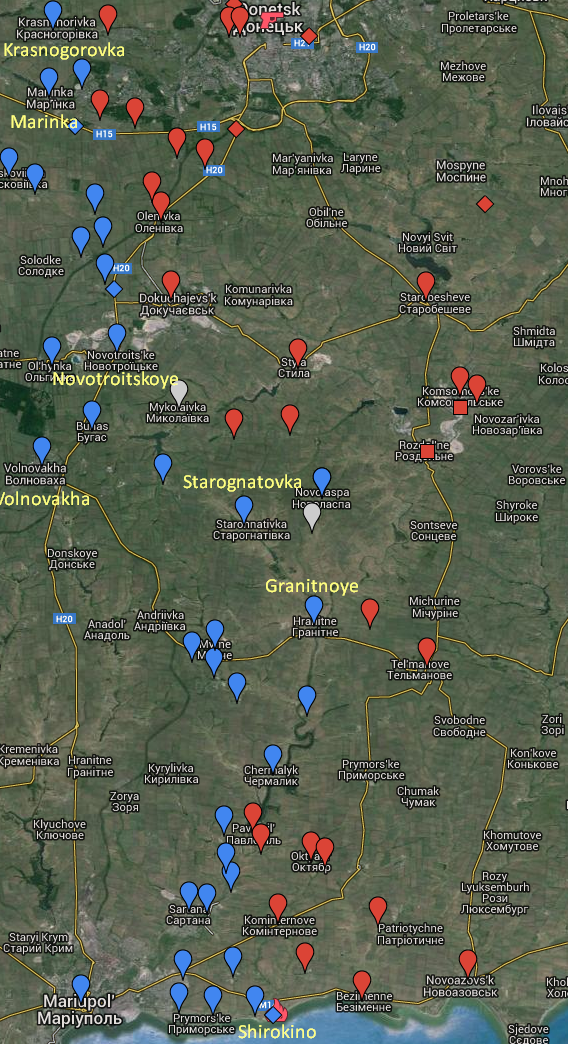
Meanwhile, to the east of Donetsk, Ukrainian-held settlements near Gorlovka and Artyomovsk came under fire.
The ATO Press Centre reported that Druzhba, north-west of Gorlovka, and Vrubovka, around 10 km from the eastern front line near Zolotoye and Gorskoye, were shelled with 122 mm howitzers.
The office of the governor of the Lugansk region, Hennadiy Moskal, claimed that Grad MLRS had also been fired at Vrubovka at around 3 am today.
Moskal’s office reported that sheds and three combine harvesters had been destroyed on a farm, struck by the Grad rockets.
The report notes that Vrubovka, lying behind the front lines, had not been shelled with Grads since the end of last year.
Zolotoye, around 11 km south-west of Vrubovka, was itself shelled with rockets, the Ukrainian military claims.
Anton Mironovich, a press office for the Ukrainian Anti-Terrorism Operation (ATO), told Ukraine’s 112 television channel this morning that Zolotoye was shelled with MLRS last night and that reports suggest the possibility that the attack was conducted not with the usual Grad rockets, but the more powerful Uragan system.
Mironovich said that representatives from the Joint Centre for Control and Coordination (JCCC) would be working on the scene today to ascertain what type of weapons were used last night.
In turn the Lugansk Information Centre, a press outlet for the self-declared Lugansk People’s Republic (LNR), claimed that Ukrainian forces had shelled Pervomaysk, around 6 km south of Zolotoye, with artillery, causing a blackout and casualties.
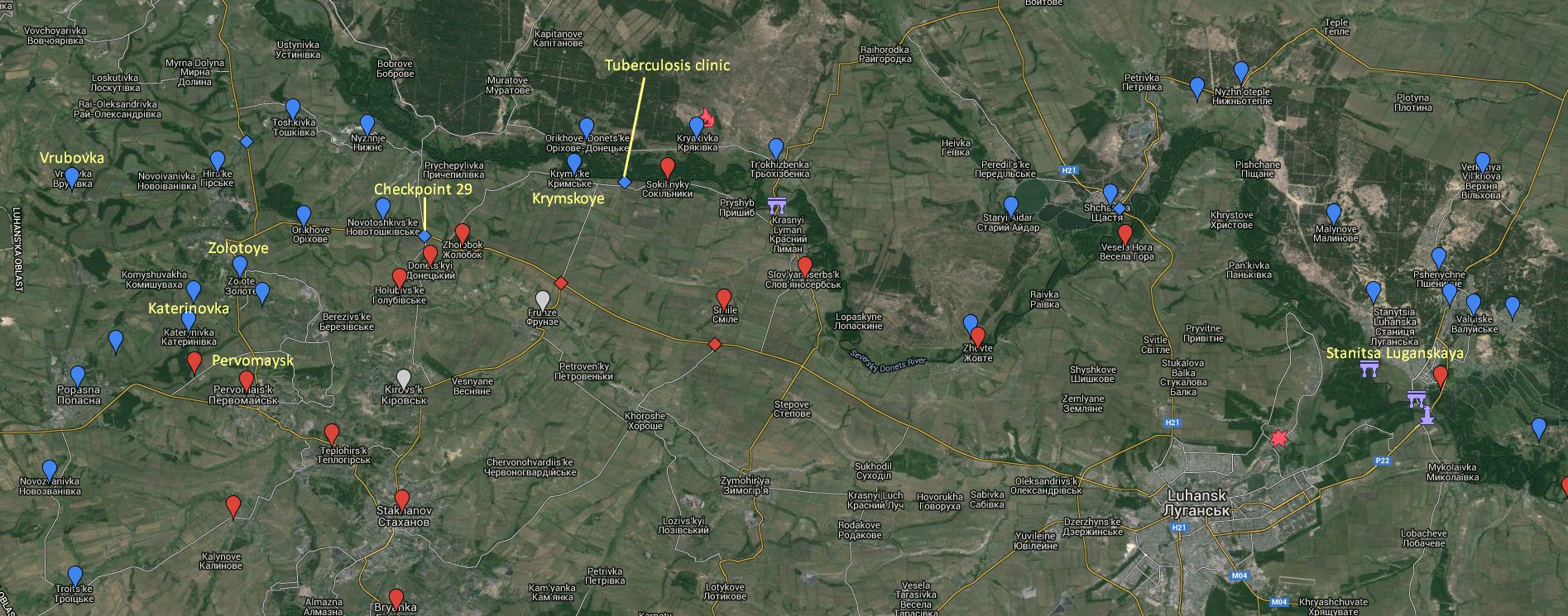
In Katerinovka, just south-west of Zolotoye, Moskal’s office reported fire-fights throughout the day as well as tank and mortar shelling from separatist-held territory. Several shells fell on the outskirts of the village, one striking a house. No casualties were reported.
Elsewhere in the region, the governor’s office reported fighting near the tuberculosis clinic on the outskirts of Krymskoye and heavy fighting near Stanitsa Luganskaya, north-east of Lugansk.
Russian-backed forces fired on Stanitsa Luganskaya with mortars and small arms over the night, “damaging several dozen homes” and severing gas mains.
This video, uploaded in the hours of of this morning, purportedly shows fires burning in Stanitsa Luganskaya after mortar shelling yesterday:
The ATO Press Centre claimed that Russian-backed forces were preparing to increase their “subversive activity” in the Lugansk region, particularly around Stanitsa Luganskaya, where Ukrainian intelligence suggested a “large-scale provocation” might be planned.
“We do not rule out the possibility of the preparation and implementation by the Kremlin’s mercenaries of terrorist acts during large public events.”
— Pierre Vaux